The principle of operation of the shock absorber is based on the creation of increased resistance to body rocking due to the forced flow of fluid through small flow sections in the valves (this applies to oil shock absorbers, while in gas shock absorbers the principle of operation is based on the pressure of gas pumped under a certain pressure)
The serviceability of the shock absorber can be checked in the following ways:
- place the car on an overpass or inspection pit and rock it by the front bumper, applying a force of 40 - 50 kgf.
With serviceable shock absorbers, the number of body oscillations should not exceed three;
- disconnect the lower mount of the shock absorber and pump it by hand.
A serviceable shock absorber is pumped smoothly, without dips and jamming, with a small resistance.
The resistance during the rebound stroke should be greater than during the compression stroke.
Of course, you can also check it at a service station on a special shock absorber test stand.
Removing the shock absorber
Hang out and remove the front wheel.

Using a spanner "on 17" unscrew the nut of the upper shock absorber mount, holding the rod from turning with a 6 mm wrench
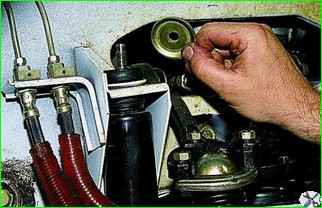
Remove the washer
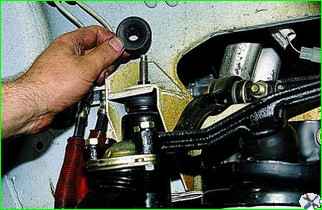
Remove the upper rubber cushion of the shock absorber rod mount
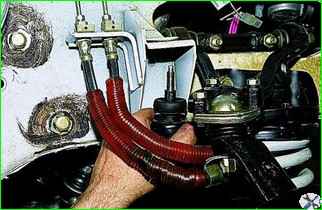
Having compressed the shock absorber, we remove its rod from the bracket hole
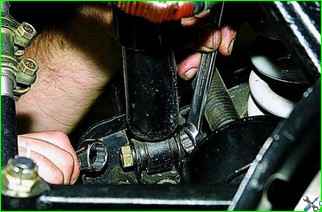
Using a 17 mm open-end wrench, unscrew the nut of the lower shock absorber mount bolt to the spring cup, holding the bolt from turning with a wrench of the same size dimensions.

Removing the bolt
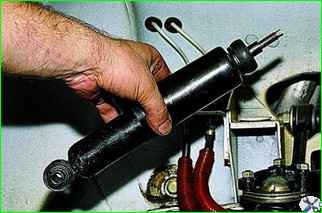
Remove the shock absorber (with the lower rubber cushion and spacer sleeve on the rod).
Install the shock absorber in the reverse order.
Finally tighten the lower shock absorber mount nut in the "car on wheels" position





